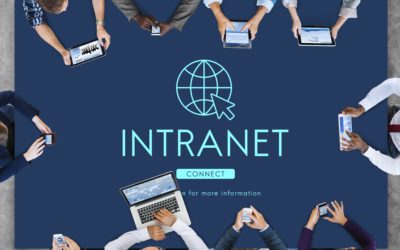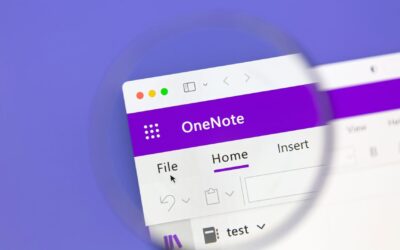“As a Service” developers drive IT evolution by helping businesses shift from on-premise hardware to the cloud.
Today, cloud offerings like Software as a Service (SaaS), Infrastructure as a Service (IaaS), and Platform as a Service (PaaS) reign supreme.
According to IBM, “IaaS, PaaS, and SaaS are not mutually exclusive. Many businesses use more than one, and most large enterprises use all three.
‘As a service’ refers to the way IT assets are consumed in these offerings – and to the essential difference between cloud computing and traditional IT. In traditional IT, an organization consumes IT assets – hardware, system software, development tools, applications – by purchasing them, installing them, managing them, and maintaining them in its own on-premises data center. In cloud computing, the cloud service provider owns, manages, and maintains the assets; the customer consumes them via an Internet connection and pays for them on a subscription or pay-as-you-go basis.
So the chief advantage of IaaS, PaaS, SaaS, or any ‘as a service’ solution is economic: A customer can access and scale the IT capabilities it needs for a predictable cost, without the expense and overhead of purchasing and maintaining everything in its own data center.”
Public Cloud is Driving Innovation
That’s why five to ten years from now, enterprise cloud vendors (ECVs) will deploy every core business application and platform you need through a secure portal managed by your managed service provider (MSP) or IT department.
Most of the traditional office IT infrastructure will be phased out. And the executives who approve IT budgets will save money on equipment, real estate space, power, and full-time IT staff.
They’ll also spend much less time trying to become experts on all the complex, moving parts.
Delivery Systems Evolve
Scott D. Lowe of Nutanix notes several positive trends related to IT deployment costs and cloud delivery systems:
- Flash storage is becoming more affordable while its capacity is increasing—fast, durable, and dependable auger well for longevity.
- Storage vendors have hit the market with NVMe (Non-Volatile Memory Express) flash devices, which simplify storage access and enhance performance.
- Intel continues to release advanced processors, which allow the software to supplant the role of more expensive hardware-related functions, ramping up the speed.
- Hypervisors, the software behind virtualization, have become commoditized with new vendor alternatives, competitive pricing, and high availability for easy workload migration.
- Containers have become a quick and easy alternative for developing, testing and deploying applications.
- The hyper-convergence of commoditized storage and compute resources simplifies administration, decreases costs, and improves the client and customer experience, i.e., for you and your customers.
(Source: Enterprise Cloud For Dummies®, Nutanix 2nd Special Edition)
Simply put, the commoditization of hardware fuels the evolution of the software-defined data center (SDDC).
What are the key takeaways?
- Billion-dollar public cloud vendors like AWS, Microsoft Azure, and Google are becoming less dependent on hardware for innovation.
- The rest of us can benefit by jumping on board and tapping into ready-to-go services, decreasing our hardware footprint.
The following sections highlight where we’ve been and where you can go with the right MSP partner.
IT Evolution: The On-Premise Days
While I would be hard-pressed to identify any businesses with the following profile in 2023, it’s essential to review where we’ve been to illuminate the rapid rate of technology realignment happening now.
Generally speaking, in the 1990s and early 2000s, most small and medium-sized businesses (SMBs) had everything onsite.
- Applications
- Backup
- Hypervisors
- Databases
- Operating Systems
- Networks
- Physical Servers
- Storage
This list is a traditional, client-server software model (sales, finance, operations) with a dense equipment footprint requiring in-house and third-party monitoring, management, and support.
The only slightly modern detail is the hypervisor, which signifies virtualized servers. For instance, five different services may be running on one bare-metal box instead of five services running on five bare-metal boxes.
The Days of Manual Intervention
During most of the 90s and beyond, keeping IT systems up and running and supporting users required more physical bodies, time, and manual supervision to maintain and update core infrastructure.
Since fast, affordable, and reliable Internet wasn’t mainstream, businesses could choose between inexpensive and relatively slow DSL or slightly quicker and costly T1s.
Digital assets had to be onsite due to bandwidth constraints.
Developers also created software destined for servers, requiring complicated user licenses and predictable annual software maintenance agreements. These vendors were not architecting solutions with the web in mind.
Tactical User Support Inefficiencies
This period was the heyday for IT providers of all shapes and sizes to provide various flavors of IT support with a heavy reliance on maintaining a physical presence, even for tactical user support.
When the IT guy showed up in your office, he was a hero saving the day, even if his handiwork was the ultimate reason he had to make so many personal service calls.
The classic question “How responsive are you?” was born in this era because clients always called tech support for emergencies. Nowadays, these “emergencies” are avoidable.
IT providers also sold most of their equipment in three, five-year refresh cycles with 40% product resell markups and large blocks of project hours.
In 2009, the CFO of a 50-person insurance brokerage wouldn’t laugh if you showed her a $30,000 project quote for a Microsoft Exchange Upgrade.
Internet Innovations
In the late 2000s, internet innovations made significant strides, and the business world began warming to Software as a Service (SaaS) in the cloud. According to Statista, the average internet connection speed in the United States grew from 3Mbps in 2007 to 18.75 Mbps in 2017.
And costs fell. In 2004, a 1.5Mbps X 1.54Mbps T1 was $500 per month. In 2022, 100Mbps X 100Mbps (6666% more) is yours for the same price.
Highspeed Internet reports, “Between 2018 and 2022, 16 major internet providers in the US saw speeds trending upward, with many reaching 150 Mbps across the board.”
No wonder most SMBs now run more than 80% of their workloads in the cloud and partner with Microsoft Gold Partner MSPs to receive various levels of consulting and support.
Learn More: Integris Certifications and Partnerships
IT Evolution: The Private Cloud Conversation
Legacy private cloud offerings from MSPs are still around and different from public clouds. MSP private clouds were popular about ten years ago.
Forward-thinking MSPs (in the 2000s) would either build out small network operating centers in their offices or lease rack space in larger data centers like QTS and host client assets on servers there.
Moving assets offsite then and now creates several benefits:
- Greater disaster recovery resilience
- Less reliance upon power issues in the office
- Real estate space savings
- Easier remote access for employees
- Lower administrative overhead for full-time IT employees
- Capital expenditure reductions
Learn More: On-Premise versus Cloud
It’s Complicated When Worlds Collide
Moving assets offsite also creates new challenges when old and new worlds collide.
Assets in private clouds require expensive legacy hardware, operating system, software licensure, ongoing updates, maintenance, and refreshes.
Much of this technology was not designed to run over the Internet and requires architectural workarounds to integrate with applications, databases, and operating systems back in the office.
In this setting, file and sequel servers require a VPN or Remote Desktop. This method is inferior to a web browser or mobile app.
These factors contribute to availability issues, lower quality of service incidents, user frustration, and inefficiencies.
Getting Locked In
Private clouds are expensive and can’t compete with the pricing and flexibility of hyper-growth public cloud providers like AWS, Microsoft Azure, and Google.
If your MSP has your assets in their private cloud, you may stay joined at the hip because you need more time to deal with the expense and perceived hassle of a transition.
Many private cloud MSPs need a game plan to move clients to public clouds and help to figure out how to make money with this new business model.
Legacy Mind and Skill Sets
Suppose you still have in-house IT overseeing your MSP relationship. In that case, they may need to be updated on certifications, comfortable with managing change, and reluctant to make recommendations that potentially jeopardize their job security.
Your average in-house IT professional came up in the 90s and probably still has a workstation and server-first mentality.
They’re in their late 40s or early 50s. These employees have families and new responsibilities and may need more time to prepare for the pivot to software in the public cloud.
IT Evolution: The “Everything as a Service” Present
Today, SMBs, midmarket companies, and enterprises use various IaaS, PaaS, and SaaS combinations, all of which are software-centric. Some of the leading providers appear below.
Popular IaaS Offerings:
- Amazon EC2
- Google Compute Engine
- Digital Ocean
- IBM Cloud
- Microsoft Azure
- SAP Technology Platform
Popular SaaS Offerings:
- HubSpot
- Microsoft 365
- Salesforce
- Shopify
- Slack
- Zoom
Popular PaaS Offerings:
- Apprenda
- Azure Web Apps
- Google App Engine
- Heroku
- Kinsta
- Red Hat OpenShift
SMBs tend to have more workloads and applications in the cloud. In contrast, larger enterprises have the budgets and business needs to employ all three, including weightier onsite footprints, which would be impractical for smaller organizations.
The Major Forces Driving IT Evolution
Enterprise software vendors (ESVs) want to sell more software with fewer obstacles to adoption. After all, who wants to rely on end-users making expensive and ongoing upgrades to their hardware and operating systems before buying more software?
Further, end-users don’t like complex software licensing requirements, and ESVs have increasing disdain for their high administrative costs.
For these reasons, ESVs are phasing out client-server software and putting development resources into public cloud platform software that runs most effectively on internet browsers and mobile devices.
Leading Indicators of Critical Mass
Microsoft’s $1.5 trillion market cap is due to the popularity of cloud services like M365 and Azure.
This detail is great news for SMBs already accustomed to using Microsoft because these time-tested applications work seamlessly in the Microsoft Cloud.
Competition with public cloud providers will decrease pricing while introducing heightened cybersecurity protection and business continuity with geographically diverse data centers.
Simplicity and Flexibility
Software solutions to manage diverse public clouds from a single pane of glass are making big waves. These tools give in-house IT, and MSPs increased visibility and control.
IT pros can quickly improve operations with a few keystrokes or automated settings and shift workloads to other providers to avoid vendor lock-in.
Finally, IT specialists can move workloads and applications back onsite to accommodate changing business requirements. Having options is nice.
Your EaaS (“Everything as a Service”) Journey
With IoT (The Internet of Things), every device on the planet is network-enabled and software-based.
Is your MSP driving this conversation about the road ahead?
Historically, many MSPs have resisted change and lost customers as a result. Many IT providers kept clients on Hosted Exchange and completely missed the boat on Office 365 (now M365).
Does your internal IT team need extra hands, credentials, and vacation time?
Forward-thinking MSPs see an opportunity to partner with in-house IT professionals and give them new tools to add value.
Please schedule a discovery session to explore your IT evolution and more.



